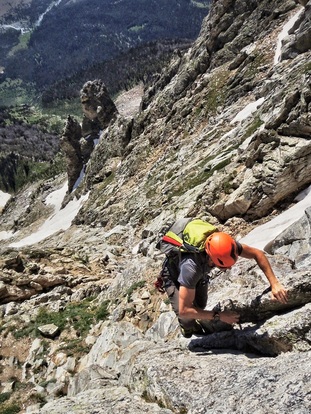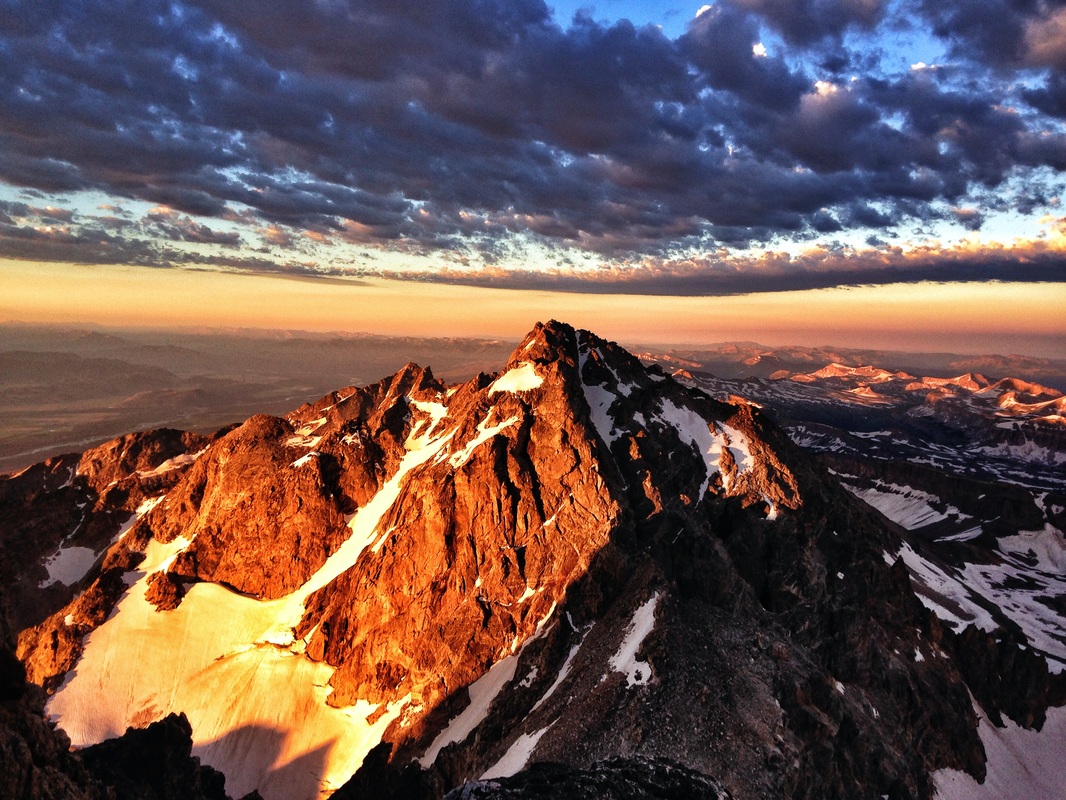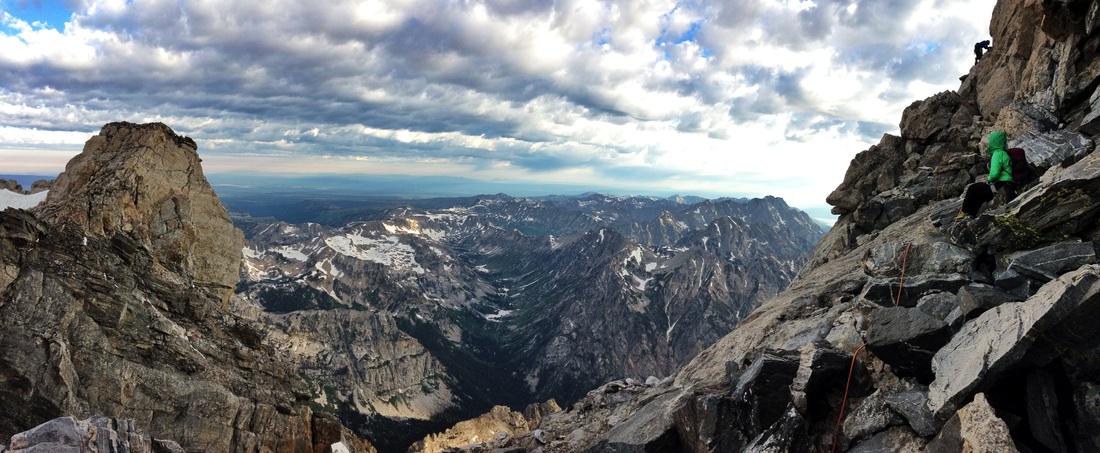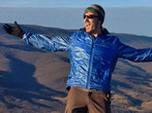Clouds materialize from the void, billowing off craggy spires like smoke from a pipe. Late season snow clings to steep mountainsides, stained from rock and dirt and hard as concrete. Boulders litter the landscape, strewn about like metamorphic building blocks in some mythological child’s playpen.
It’s 4:30 a.m., and headlamps give way to an alpine kingdom as first light greets us at 12,000 feet on our ascent of the Grand Teton. The scale dwarfs human perception – it’s as if some cosmic machine scoured the landscape, demolishing any sense of order.
 Ropeless on Teewinot (Photo courtesy of Dylan Jones)
Ropeless on Teewinot (Photo courtesy of Dylan Jones)
We reached the Grand’s 13,775-foot summit around noon, awarded with a break from the incessant winds and biting cold that followed us up the Owen-Spalding route.
To the north and south, are the range’s metamorphic spires and icy couloirs, hidden to most visitors. Alpine lakes in shades of blue dot the saddles, some still holding ice. Glacially-carved canyons drain torrents of snowmelt – the thundering rapids that froth over ledges look like small brooks from this vantage.
The Snake River extends eastward, winding through a vast valley before disappearing beneath the 100-mile long Wind River Range. To the West, mountains give way to flat agricultural fields, the landscape leveling out like the pen of a seismograph following a powerful quake.
We are only visitors to these great cathedrals in the sky. Yet with implications of climate change becoming more drastic, it is clear they are not impenetrable fortresses.
It begins here in the mountains – where the pika is a living alarm system; a high-elevation canary in alpine coalmine. And it is here in the mountains that I feel my greatest sense of purpose.
Mountains serve as a great equalizer. They are the masters of creation and destruction, constantly altering landscapes before our eyes. We need these majestic places to humble us.
As I stood on the shoulders of these giants, I experienced a sublime sense of insignificance. The training, the preparation, the approach, the climb, it had all led up to this. Calm set it, as if I stood in the eye of a 13,000-foot hurricane. The exhaustion, the hunger, the pain, it all faded. Up here, I was alive.
West Virginia native Dylan Jones grew up exploring the lush forests of Appalachia, where he gained a passion for conservation at an early age. He is currently a graduate student studying Environmental Policy and Public-Private partnerships in at West Virginia University, where in 2010 he earned a degree in Journalism. In his free time, Dylan rock climbs, mountain bikes, backpacks and snowboards.



